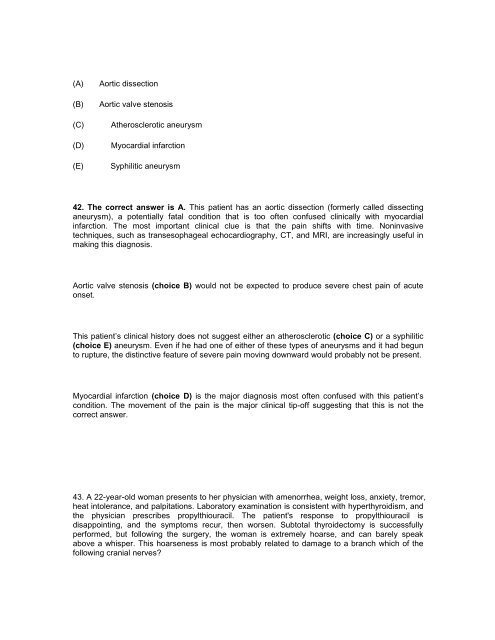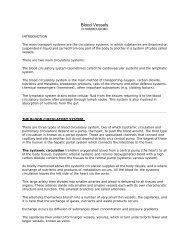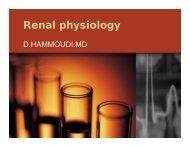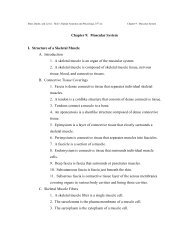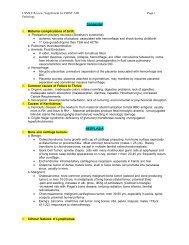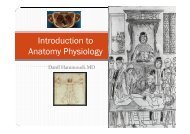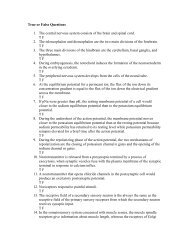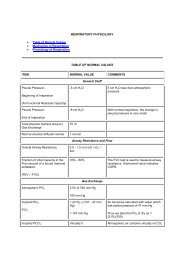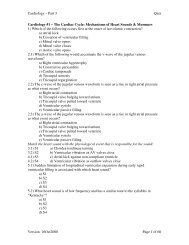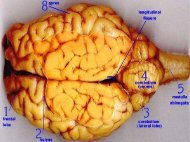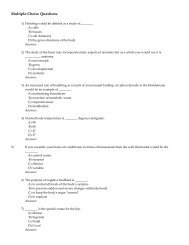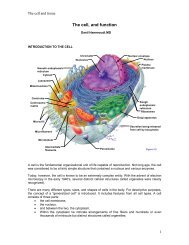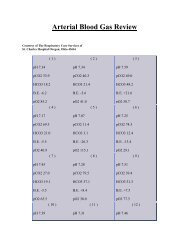L:\usmle review 7 - Sinoe medical homepage.
L:\usmle review 7 - Sinoe medical homepage.
L:\usmle review 7 - Sinoe medical homepage.
Create successful ePaper yourself
Turn your PDF publications into a flip-book with our unique Google optimized e-Paper software.
(A)<br />
(B)<br />
(C)<br />
(D)<br />
(E)<br />
Aortic dissection<br />
Aortic valve stenosis<br />
Atherosclerotic aneurysm<br />
Myocardial infarction<br />
Syphilitic aneurysm<br />
42. The correct answer is A. This patient has an aortic dissection (formerly called dissecting<br />
aneurysm), a potentially fatal condition that is too often confused clinically with myocardial<br />
infarction. The most important clinical clue is that the pain shifts with time. Noninvasive<br />
techniques, such as transesophageal echocardiography, CT, and MRI, are increasingly useful in<br />
making this diagnosis.<br />
Aortic valve stenosis (choice B) would not be expected to produce severe chest pain of acute<br />
onset.<br />
This patient’s clinical history does not suggest either an atherosclerotic (choice C) or a syphilitic<br />
(choice E) aneurysm. Even if he had one of either of these types of aneurysms and it had begun<br />
to rupture, the distinctive feature of severe pain moving downward would probably not be present.<br />
Myocardial infarction (choice D) is the major diagnosis most often confused with this patient’s<br />
condition. The movement of the pain is the major clinical tip-off suggesting that this is not the<br />
correct answer.<br />
43. A 22-year-old woman presents to her physician with amenorrhea, weight loss, anxiety, tremor,<br />
heat intolerance, and palpitations. Laboratory examination is consistent with hyperthyroidism, and<br />
the physician prescribes propylthiouracil. The patient's response to propylthiouracil is<br />
disappointing, and the symptoms recur, then worsen. Subtotal thyroidectomy is successfully<br />
performed, but following the surgery, the woman is extremely hoarse, and can barely speak<br />
above a whisper. This hoarseness is most probably related to damage to a branch which of the<br />
following cranial nerves


